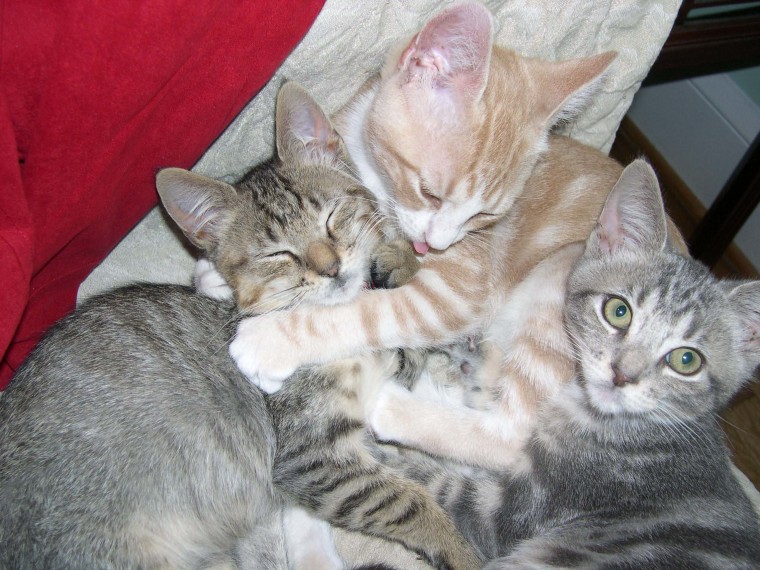A type of bird flu usually only seen in chicken flocks has infected 45 cats at an animal shelter in New York, and vets say they’re not sure how it got there.
It is unusual, but not unheard of, for influenza to infect cats. Only one of the cats at the shelter, an elderly cat, has died.

“This influenza virus is spreading from cat to cat and may be able to spread to other animals and possibly humans,” the New York City Department of Health said in a statement.
“No human infections have been identified to date,” the department added.
The shelter staff are testing other animals at the shelter, including dogs, and haven’t found any other species affected yet.
“This not really a severe disease. We don’t need to be very worried about it in cats."
Respiratory disease can spread quickly among animals held at high densities, such as at shelters, in live markets or on big farms.
Vets, doctors and other scientists keep an eye on bird flu because it can and does spread to people and has the potential to cause epidemics. So far, H7N2 hasn’t.
Related: Keep an Eye Out for H5N2, CDC Says
“The Health Department is contacting all persons who have adopted cats from Animal Care Center’s Manhattan care center since November 12th,” the agency said.
Cats with cough, fever, runny noses or lip-smacking behavior should be kept separate from other animals, and their owners should call the health department. It’s good advice to keep a sick pet of any kind away from others anyway, vets say.
Health experts have been keeping a close eye on new types of influenza ever since H5N1 avian influenza re-emerged in Hong Kong in 2003. Flu viruses mutate constantly and also mix up their genes — a process called re-assortment.
Related: New Bird Flu Virus Shuts Down Indiana Farm
Each time a new strain results from either process, it can confuse the immune systems of animals or people and cause epidemics. A new avian flu is the No. 1 fear of biological security experts, who know flu causes regular pandemics among people, sometimes killing millions in months.
So animals and people are being tested more and more often with sensitive genetic tests that show not only that influenza has caused an infection, but which strain of influenza.
“Certainly, influenza always sends us interesting things to deal with."
This particular strain of H7N2 is not particularly worrying, said Dr. Amy Glaser, a virologist at the College of Veterinary Medicine at Cornell University.
“Generally, it is a relatively mild disease and the animals are recovering,” she told NBC News.
“There is no reason to believe that it is more widespread than this shelter at this point in time,” Glaser added.
Related: Dog Flu Cases on Rise in Chicago
This particular strain of H7N2 had not been since 2006, Glaser said. It had been seen in live bird markets in New York. It’s possible wild birds picked it up and kept it circulating since then, she said.
“We need to be looking for influenza in unexpected places,” she said.
Bird flu viruses can spread quickly from one farm to the next, even with strict security measures. H5N1 has killed or forced the destruction of hundreds of millions of chickens around the world.
It's infected about 800 people and killed half of them — and the fear is it will mutate into a form that makes it pass easily from person to person. That would spark a pandemic that could kill millions.
Flu viruses also spread from birds to pigs and from people to pigs and from pigs back into people.
Related: Deadly Influenza Flew Over from Asia
There are many different strains of influenza. Influenza A viruses get names based on two important structures — H for hemagglutinin and N for neuraminidase. That’s how you get names like H7N9, H3N2 or H1N1.
In birds, they are also designated as highly pathogenic or low-pathogenic.
H7N9 is another strain that has the ability to cause a pandemic. It's infected more than 600 people in two years and killed about a third of them.
